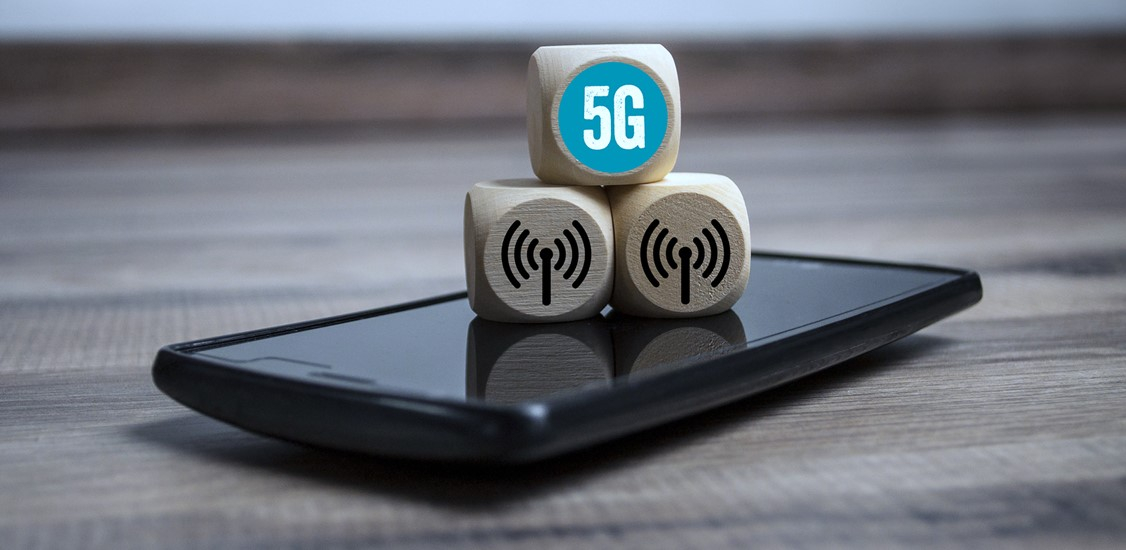As the year in which everything changed has ended, Opensignal forecasts the impact on the mobile world in 2021 and beyond.
Mobile telecom networks and service provider businesses have proved extremely resilient over the last twelve months despite the increased reliance placed upon them by everyone. Alongside the operational challenges of meeting the new demands on their networks, operators have continued to pursue new 5G launches and expand 5G deployments — to build the foundations for the world beyond the current global crisis.
Nine predictions for 2021 and beyond:
#1: Mobile network capacity will become fluid from 2021 onwards
This year we saw changes in the locations and nature of mobile usage across many countries due to the pandemic. We saw overall mobile data consumption levels increase and speeds reduce as a result in countries like Italy, Malaysia and India as users relied more on mobile networks. In other countries we saw overall data consumption fall and speeds rise, for example in Argentina, Brazil and Mexico. While in a third group — including Australia, Switzerland and the U.S. we saw a more even picture. As lockdowns ease, operators will look at how to manage capacity more dynamically, for example between downtown areas and residential suburbs, and be more nimble to future changes in the pattern of mobile usage.

Ian Fogg,
VP Analysis,
Opensignal
#2: Post COVID-19, operators will turn to group video calling to market 5G
Opensignal predicts that 5G operators will use group video communication to accelerate 5G uptake and will market the benefits of the additional mobile capacity that 5G brings. Mobile video chat existed before COVID-19, but the experience of 2020 has pushed group video communication into the mainstream. With more video participants, there is greater pressure on the capacity of the mobile network, more data traffic and a more demanding experience. Already, in 2020, Apple made 4K Facetime a feature that requires a 5G connection and is incompatible with 4G. We are now analyzing how mobile connectivity impacts group video calling. Countries range widely in the quality of their group video calling experience, but 5G helps. Users in Canada, the Netherlands, Taiwan and South Korea have all seen big improvements in their group video calling experience when using 5G.
#3: Poor experiences will trigger users to change operators in 2021, not price
Even in a difficult economy, Opensignal’s analysis of mobile churn in Italy showed that having a weak mobile experience correlated with users that then switched their mobile operator. Leavers spent between 64% and 94% less time with a mobile signal and less time connected to 4G than the average for users on their original operator before they switched. In other words, price alone does not explain mobile churn. In 2021, Opensignal predicts that mobile experience will be the most important catalyst for smartphone users to decide if they want to change mobile operators as users focus more on ensuring they have a high quality mobile service provider as a result of placing more reliance on telecom services during the 2020 crisis.
#4: 5G will trigger improvements to mobile video streaming quality, increasing data usage
Opensignal predicts that mobile data consumption will surge, driven by 5G mobile users streaming video at higher resolutions that uses more data. We see early signs of higher 5G data consumption with users consuming up to 2.7 times more data on 5G than on 4G in six leading 5G countries. The increase was greatest in Germany (2.7x), Japan (2.6x), and the UK (2.5x) with more modest but still significant uplift in South Korea (2x), the U.S. (1.9x) and Australia (1.7x). Our analysis showed that, by enjoying on average a better mobile experience compared to 4G users, 5G users consumed more content on their smartphones at a higher quality. Mobile video services on more congested 4G networks would only be able to stream lower-quality video with more compression and at a lower resolution.
#5: Operators in the Americas & Europe will copy their Asian peers, and use mobile gaming experience to acquire customers.
Mobile gaming was one of the sectors to profit from the COVID-19 pandemic with increased entertainment usage. To date, Opensignal sees a wide variation in the multiplayer mobile gaming experience across countries, indicating there is room for 5G to help gamers to win more. Operators have become increasingly active in the fast-growing field of Esports, especially in Asian countries like Indonesia, Malaysia and South Korea. The promise of lower latencies, edge computing, and 5G will entice more operators to market the multiplayer gaming experience and cloud gaming.
#6: In existing 5G countries, 5G will become the default experience for new customers.
When 5G first launched, consumers often had to pay extra for 5G or opt in to 5G service. And, because early 5G smartphones were exclusively top-tier flagship devices, many consumers chose to opt for cheaper 4G-only hardware. In 2021, we expect 5G will be supported by almost all mid-range smartphone models, enabling 5G operators to make 5G a standard part of the mobile experience for new customers. Opensignal data shows that 5G is already typically 5-6 times faster than 4G, transforming the default mobile experience for users. And, with more new 5G spectrum coming online in many countries, the experience gap between 5G and 4G should widen as operators expand their 5G rollout beyond an initial launch.
#7: The 4G experience improves markedly on the eve of new 5G launches, risking confusion
Globally, there are many operators still to launch 5G that will unveil their fifth generation service during 2021. Opensignal predicts that these upcoming 5G operators will invest in network infrastructure that is shared by 5G and older mobile technologies, such as improved cell base station backhaul, ahead of 5G launches. This better onward connectivity will boost the experience for 4G users too. We have seen tremendous improvements on 4G in many countries in 2020, such as in the Philippines. This will make the difference between the initial 5G experience, and the 4G experience, seem narrower. There are signs of such 5G cynicism in the U.S. although Opensignal’s latest analysis of five U.S. cities shows a much faster 5G U.S. experience. In reality, these shared infrastructure investments that help 4G would not have happened unless operators knew 5G was coming soon.
#8: 2G and 3G switch-offs will accelerate in 2021.
Mobile users’ appetite for 5G will cause operators to work with regulators to move towards switching off 3G services on existing spectrum bands to increase the capacity available for more efficient 5G technology. We’ve seen evidence of such 3G changes in Germany. While in the U.S., we’ve seen AT&T juggle 4G spectrum on the 850 MHz band at the start of 2020 in order to launch 5G services to more areas. But operators will need to be careful not to open up digital divide issues in markets where mobile users lack modern 4G or better hardware and continue to use older 2G or 3G handsets.
#9: 5G Internet of Things opportunities will stay on the horizon.
While the creators of the 5G standards continue to target IoT markets like smart agriculture, industrial automation or the automotive industry, the ongoing challenges the world faces at the moment will cause operators to focus mostly on traditional mobile telecom markets that do not require the very latest bleeding edge 5G standard to be deployed. During 2021, operators will be busy launching standalone 5G, expanding 5G availability, and improving mobile broadband using 5G while trialing 5G IoT offerings. Enterprises will want to know that 5G technologies like network slicing are robust before relying on them. Operators have enjoyed being seen as highly resilient during 2020’s adversity and until the COVID-fueled crisis is fully over, they will remain reluctant to make big bets on completely new markets near term without ensuring that the necessary 5G foundations are fully in place.




















